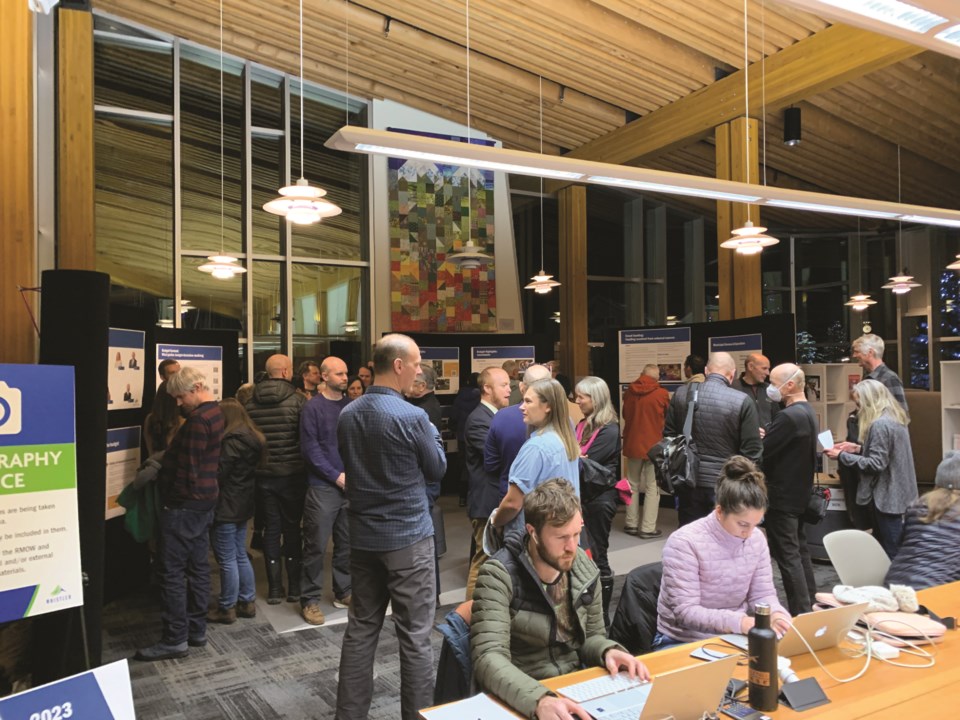The Resort Municipality of Whistler (RMOW) is creating a new division at municipal hall dedicated to strengthening Whistler’s social fabric and enhancing engagement with the community, a key part of the local government’s recently unveiled four-year strategic plan.
At the regular meeting of council on Tuesday, Feb. 21, the RMOW offered further insight into its overarching 2023-26 Strategic Plan, which sets high-level priorities and initiatives for council’s term in office.
The Strategic Plan is divided into four main priorities: housing, climate action, community engagement and smart tourism. In the first of Pique’s series delving further into the strategic plan, we hone in on community engagement, and, specifically, the RMOW’s plans for a new Community Engagement and Cultural Services division.
In its report last week, the municipality pointed to the outcomes of last year’s Whistler Sessions scenario planning—which took a sober look at what the resort could look like in 15 to 20 years if current trends persist—as an indicator of the need to enhance its engagement with the public.
“There exists a real potential that as housing and affordability challenges increase, so does division and fracturing within the community fabric,” the report stated. “If this community fabric begins to come apart, the rich Whistler culture that locals contribute to and visitors seek out will start to dissolve.”
The RMOW views robust community engagement as “one of the best ways to build and strengthen connections between the RMOW and residents as well as residents themselves,” the report went on.
Along with its new division, the municipality has several ideas to enhance engagement. Among the initiatives identified in the report are plans to expand its communication channels; to update its website; to improve real-time information sharing; to develop content targeted at young demographics in the community, an historically underrepresented group in local politics; and to review existing council procedures to find ways to reduce barriers for public input.
As part of that process, the RMOW will conduct an in-depth review of its current committees of council, “an optimization exercise” intended to ensure “we don’t have big overlaps with the work that’s being done and that we’re getting the most value out of the process that we possibly can,” explained Mayor Jack Crompton following the Feb. 21 meeting.
The RMOW lists 17 select committees on its website, although not all are currently active. Each committee includes municipal staff and appointed councillors, and, commonly, resort stakeholders as well as community members at large. Part of the committee review process is to ensure “every time the RMOW convenes a group of residents and stakeholders for input, there is clarity around the purpose of the discussion, the participants feel valued for their contribution and are able to clearly see where their feedback has been captured and considered in the municipality’s work,” the report stated.
Meanwhile, a new general manager position has been created to oversee the Community Engagement and Cultural Services division, following a restructuring of the RMOW’s internal organization. Municipal CAO Ginny Cullen said the new division won’t require the hiring of additional staff positions, though a new staff member is being recruited to fill the role.
“We took manager positions that were retirements and we added them together and made a GM,” she said. “We’re pretty careful to not add staff. We tried to rearrange it to optimize our staff.”
While the division’s day-to-day responsibilities are still being ironed out, part of the goal is to “bring key community-facing facilities and teams alongside departments tasked with visitor-facing programming and tourism development work,” the report noted. “This change compliments council’s new priority area and will elevate community considerations in the design and implementation of projects supporting tourism.”
Cullen said it will be important to clearly define the division’s scope.
“We’re still working through the strategy of that department. Because it’s such a big mandate, we have to be really careful about where we draw the fence around what we can and cannot do, because you can call anything ‘community engagement,’” she said. “But it will start by streamlining what we’re doing internally, and then we’ll be looking at what the key projects that we need to be engaging on. But then also things we haven’t seen yet.”





